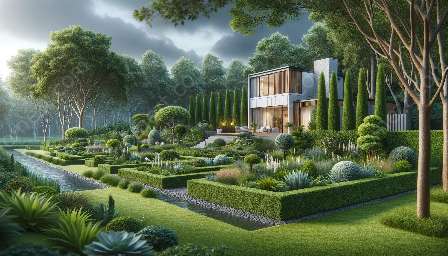Noise pollution is a prevalent issue in urban and residential areas, affecting the well-being of individuals and communities. In recent years, there has been a growing emphasis on utilizing vertical greenery systems as an effective solution for noise control. These innovative systems not only offer aesthetic appeal but also provide significant environmental and health benefits. Through the integration of green walls, trellises, and vertical gardens, vertical greenery systems can effectively mitigate external noise sources, creating a more peaceful and harmonious living environment.
Exterior Noise Control: Utilizing Landscaping Techniques
Exterior noise control is a critical consideration for urban planners, architects, and landscape designers. One of the most effective and aesthetically pleasing methods of addressing exterior noise is through the implementation of landscaping techniques. By strategically incorporating natural elements such as trees, shrubs, and green barriers, it is possible to reduce the impact of external noise on residential and commercial properties. Greenery not only acts as a physical barrier for sound waves but also contributes to the overall beautification and ecological enhancement of the surroundings.
Noise Control in Homes: Leveraging Vertical Greenery Systems
Noise control within homes is essential for creating a peaceful and comfortable living environment. Vertical greenery systems offer a holistic approach to addressing indoor noise pollution. By integrating living walls, green screens, and indoor vertical gardens, homeowners can effectively attenuate noise transmission, enhance indoor air quality, and introduce biophilic design elements into their living spaces. These green solutions also contribute to thermal insulation, thereby enhancing energy efficiency and reducing the overall carbon footprint of residential buildings.
Benefits of Vertical Greenery Systems for Noise Control
- Noise Attenuation: Vertical greenery systems provide a natural barrier that absorbs and diffuses sound, reducing the impact of external noise pollution.
- Aesthetic Enhancement: The incorporation of green structures contributes to the visual appeal of urban and residential landscapes, creating a more inviting and tranquil atmosphere.
- Health and Well-being: Greenery has been proven to have positive psychological and physiological effects, promoting relaxation and stress reduction.
- Environmental Sustainability: Vertical greenery systems contribute to urban biodiversity, improve air quality, and mitigate the urban heat island effect.
- Energy Efficiency: Green walls and vertical gardens can contribute to building insulation, lowering energy consumption for heating and cooling.
Implementing Vertical Greenery Systems
Integrating vertical greenery systems for noise control requires thoughtful planning, technical expertise, and collaboration among architects, landscape designers, and horticultural specialists. The selection of appropriate plant species, irrigation systems, and structural considerations are essential for the successful implementation of green structures. Additionally, ongoing maintenance and care are crucial to ensure the longevity and effectiveness of vertical greenery systems in noise control applications.
Conclusion
Vertical greenery systems offer a multifaceted approach to addressing noise control in both exterior and interior settings. By harnessing the potential of green walls, trellises, and vertical gardens, individuals, communities, and urban developments can create quieter, healthier, and more sustainable environments. By incorporating these innovative solutions, we can mitigate the adverse effects of noise pollution while enhancing the beauty and livability of our surroundings.


